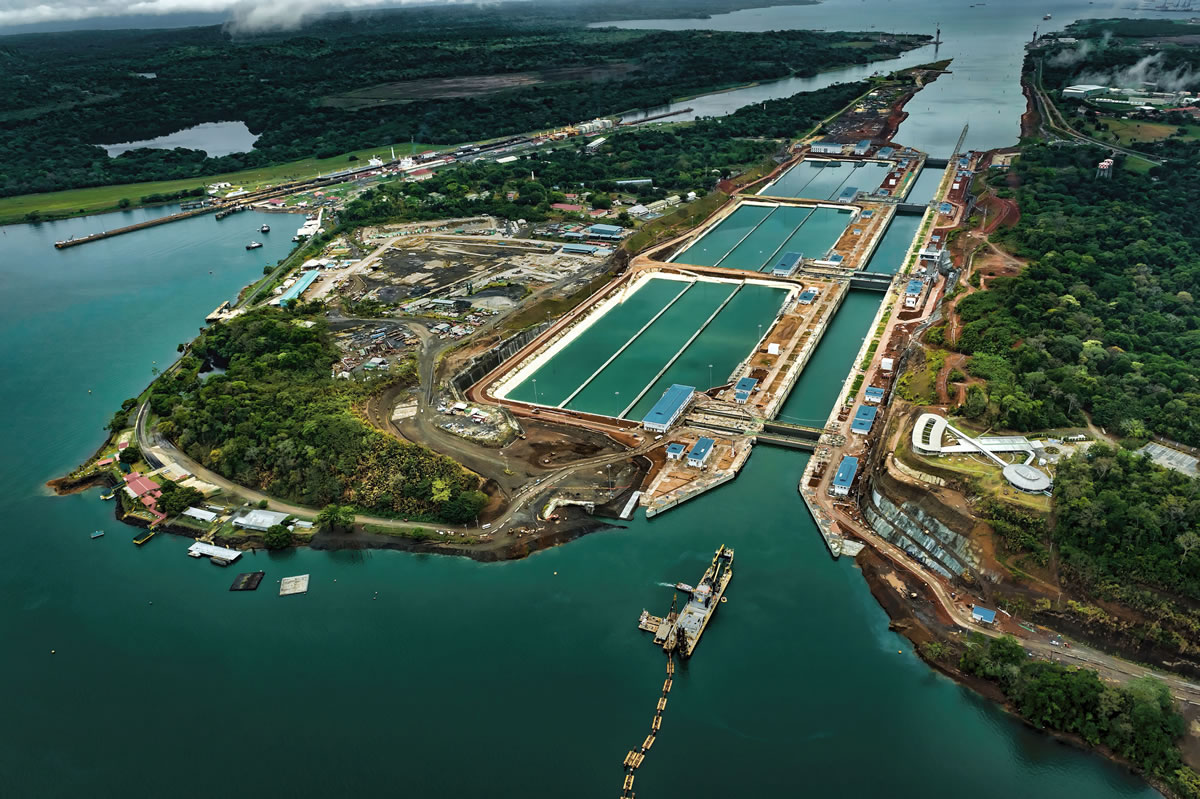BIM Modelling at the heart of expansion of Panama Canal
Project
Published by:
Datasheet
Company: MWH Global
Location: Panama, Panama
Year of the project: 2007
Published: 14/02/2018
Budget: 5.25 Millon $
Description
The $5.25 billion expansion of the Panama Canal is one of the world’s largest civil engineering schemes and will vastly increase its capacity. At the heart of the infrastructure development is the use of Building Information Modelling – BIM.
Panama Canal handles around 5% of all global trade, making it one of the most important waterways on earth. It effectively provides a short-cut for ships between the Atlantic and Pacific oceans through Panama in Central America.
The construction of the Third Set of Locks alone involves the pouring of some 4.4 million cubic meters of concrete. Once operational, the new locks will be 40% longer and 60% wider than the originals, allowing the waterway to eventually double its shipping capacity.
The canal has been operating at capacity for some time, with ships forced to queue for entry. The current expansion programme commenced in 2007. The project – which has created some 30,000 jobs – involves the deepening of channels at the Atlantic and Pacific entrances; the deepening of shipping lanes in Culebra Cut and Gatun Lake; the raising of Gatun Lake’s maximum operating level, and, at its core; the $3.2BN USD “Third Set of Locks” project.
The design is required to withstand major earthquakes and has advanced seismic design state-of-practice. The lock gates alone contain a staggering 50,000 tonnes of steel.
Panama Canal’s expansion is one of the first large-scale civil engineering projects to use Building Information Modelling – BIM – and it really has benefited the scheme at every stage. The project team includes a number of leading international contractors and consultants. MWH Global lead the design process under a joint venture (JV), subcontracted under the design-build consortium of Grupo Unidos por el Canal.
At tender stage, MWH modelled several different design options and produced visualisations which helped the client understand their proposals, enabling them to take more informed decisions.
The scale of this project means that MWH are collaborating with design teams in five different offices around the world, working on numerous elements simultaneously. The use of information models, hosted in an accessible common data environment (CDE) online has allowed this diverse team of engineers to better collaborate and co-ordinate their information, regardless of where they are geographically.
Combining design information models in this way has helped to resolve conflicts and discrepancies before construction, saving time and money. Purely on the graphical side, the 3D models have given the team powerful insight into the large and highly complex designs.
The information models have had their uses beyond the design team. The data has enabled rough take-offs for the purposes of estimating and the 3D representations have allowed contractors to truly visualise and understand proposals. The complex layouts of the mechanical and electrical systems for example were visually presented, proving an efficient and powerful communication tool.
“The graphical models offered powerful insight into the large and highly complex designs”
For more information, click here.
Type of Work
- Building
Actors
- Construction Climate Challenge
How was the BIM Experience in the project?
Reality Simulation: Does it help to get an idea of the final product?
Waste reduction, labor costs and deviations
Greater control of the construction process
Improves collaboration between agents
Conflict resolution and clash detection
Correction and error handling












